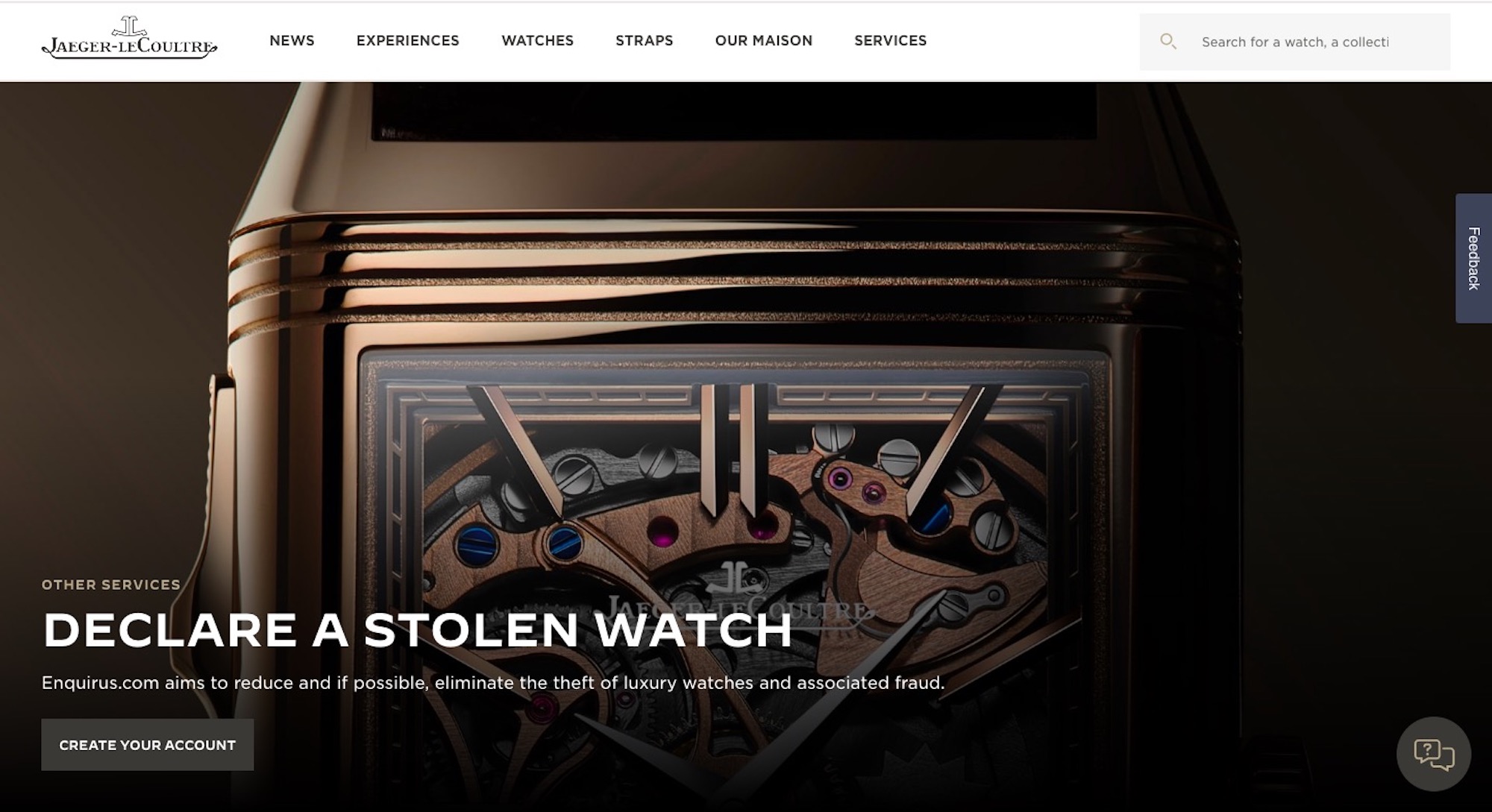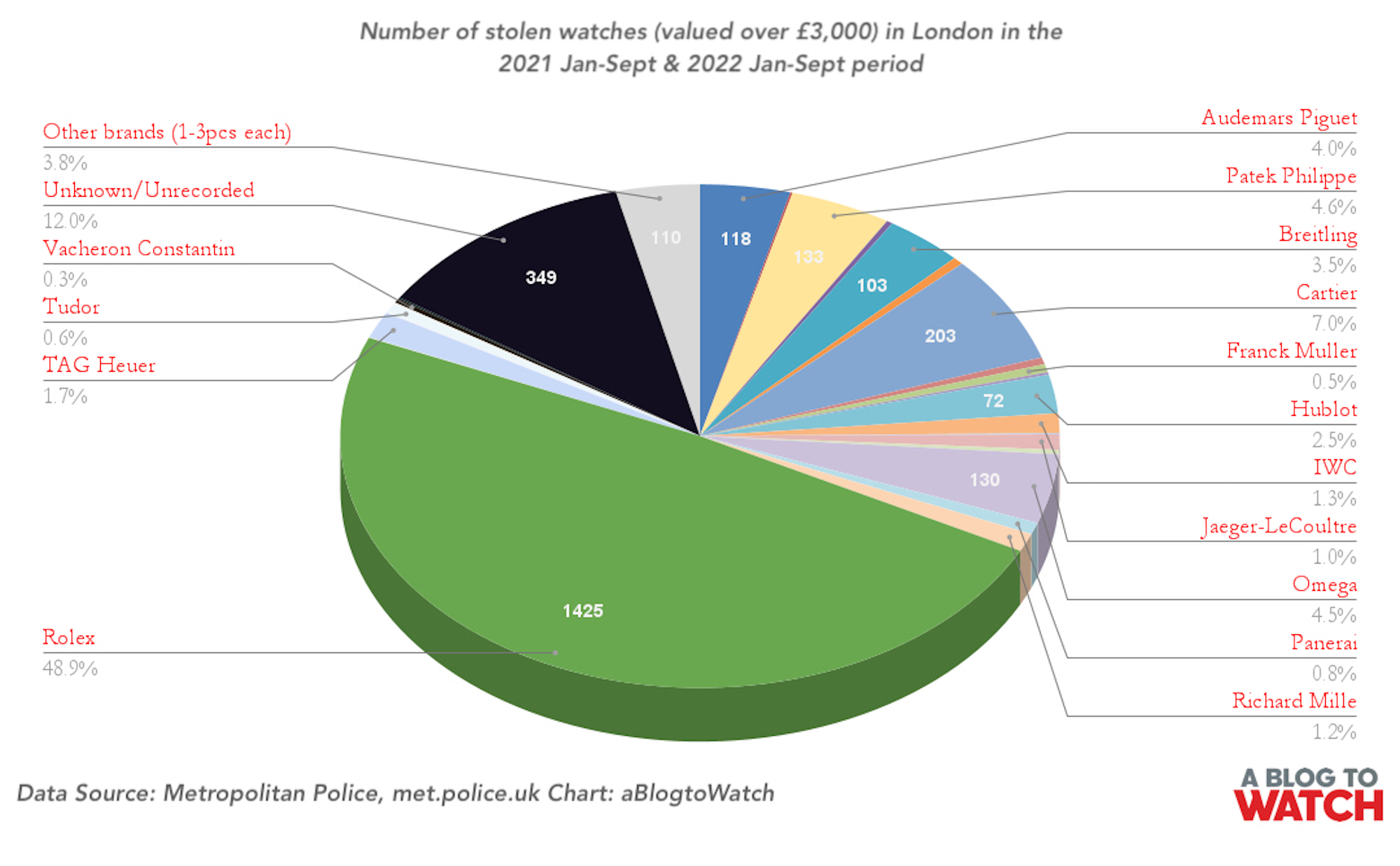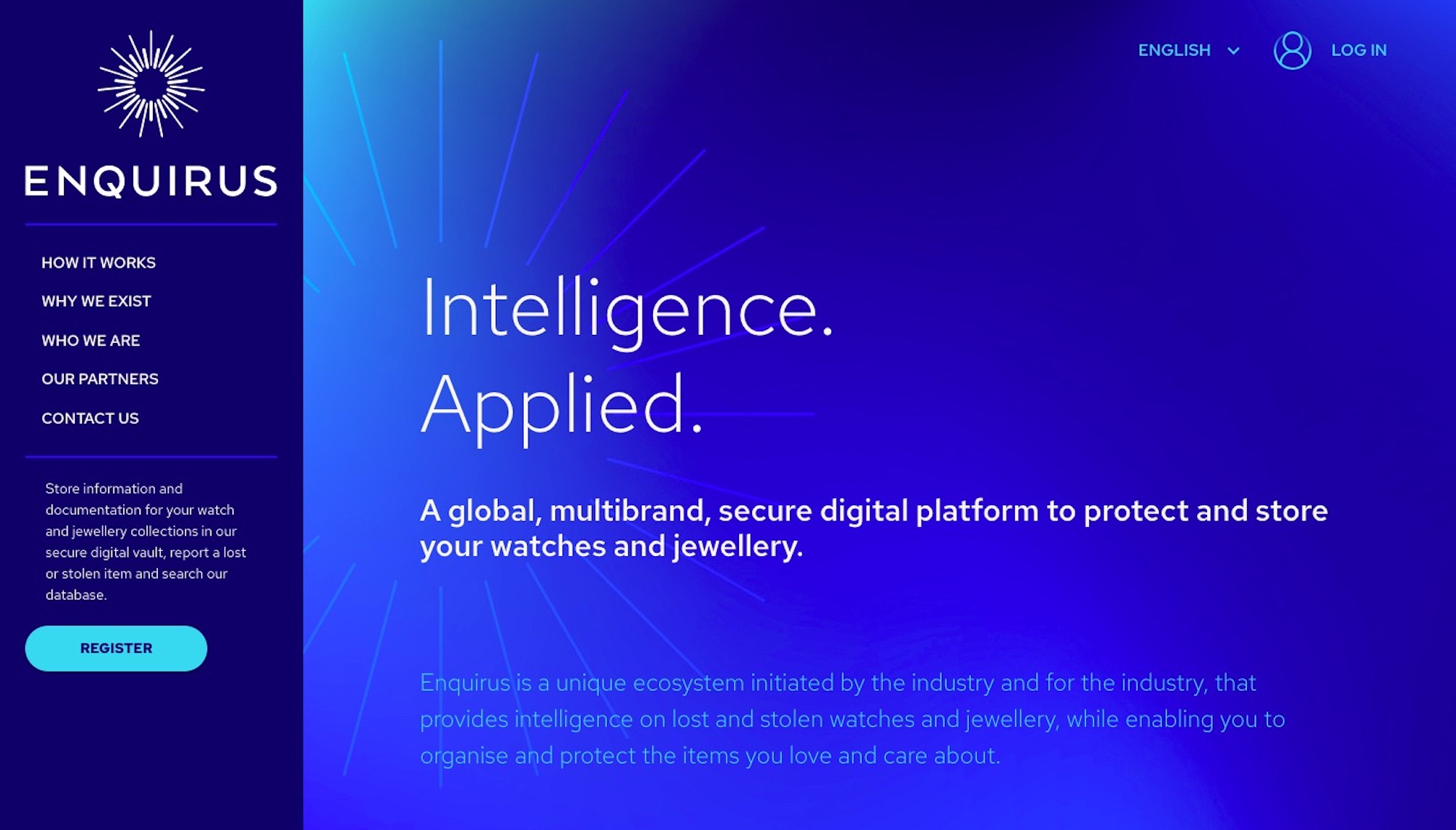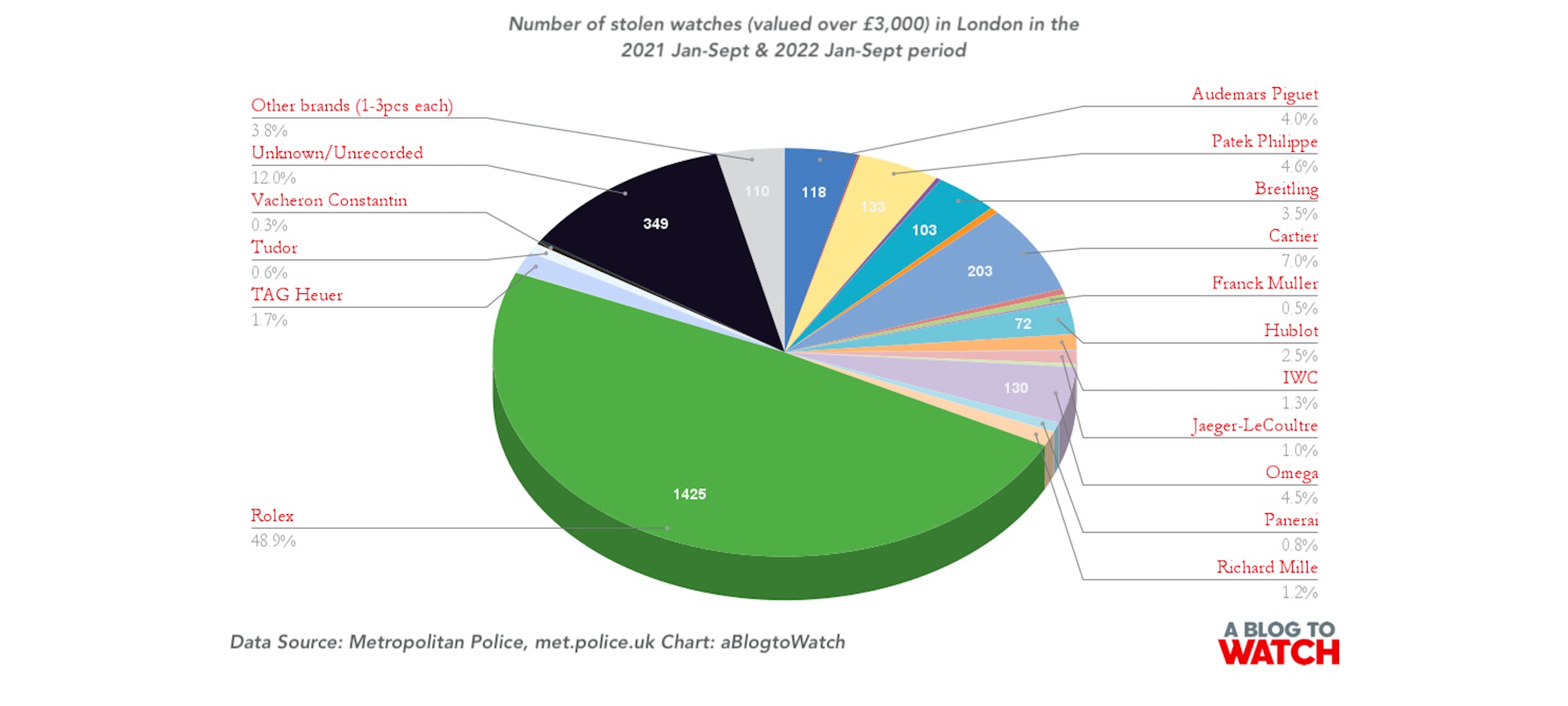
Watch theft statistics make for grim reading. It is clear they have been on the rise, with some 6,109 watches reported stolen in London, alone, last year. Those are just the reported cases (not counting the thousands of unreported thefts that happen each year), with an average value of over $6,000 per timepiece. The driving forces behind the steep increase in theft and robbery are not that difficult to identify, so I’ll highlight an aspect that probably matters more than any other for those who’ve had their property stolen: the chances of ever recovering it.
 Although it is an extremely small, and, for the record, not at all representative take on the issue, I must say I was shocked when I learned about authorized service centers in certain parts of the world running the obligatory stolen property checks on the used watches they receive for regular servicing or repair, only then to hand the watch back to its current owner, and not the police, even if the watch is known to have been stolen. Picture this: You had your watch stolen months or years ago, and you reported it to the brand and to the police. The unique serial number of the watch, as well as the brand and model name, of course, are entered into one of the searchable databases. Time goes on and the authorized service center, as much an official part of the brand of your choice as is legally possible, receives what used to be your watch for servicing and realizes that it is stolen property, only to then hand the watch back to the person who took it in without contacting the authorities, leaving it at that person’s discretion whether you will ever see your watch again. You can imagine your chances of recovery.
Although it is an extremely small, and, for the record, not at all representative take on the issue, I must say I was shocked when I learned about authorized service centers in certain parts of the world running the obligatory stolen property checks on the used watches they receive for regular servicing or repair, only then to hand the watch back to its current owner, and not the police, even if the watch is known to have been stolen. Picture this: You had your watch stolen months or years ago, and you reported it to the brand and to the police. The unique serial number of the watch, as well as the brand and model name, of course, are entered into one of the searchable databases. Time goes on and the authorized service center, as much an official part of the brand of your choice as is legally possible, receives what used to be your watch for servicing and realizes that it is stolen property, only to then hand the watch back to the person who took it in without contacting the authorities, leaving it at that person’s discretion whether you will ever see your watch again. You can imagine your chances of recovery.

This is not to say that thieves hold onto the watches they stole, casually wear them around, and eventually have them serviced them at authorized service centers. The watches, like other stolen items, find their way to new, more often than not unsuspecting owners who were shopping for a used watch. The watch has likely exchanged hands a number of times among dubious dealers and the unsuspecting buyer is paying the full market value when unknowingly buying that stolen watch on a watch sale platform, forum, or shop. The issue is that it is very difficult to check on the ownership history of luxury watches — not to mention more affordable ones.
The issue is that it is very difficult to check on the ownership history of luxury watches — not to mention more affordable ones.
I believe that a searchable database, something as simple as what Breguet has under its Stolen Timepieces page, could do a lot when it comes to helping prospective buyers and past owners avoid or identify watches with sketchy history listed for sale. Virtually no other watch brand has anything similar. None of the LVMH brands and none of the Richemont brands, at least individually, have a comparable program that I could find.

I say “individually” because Richemont very recently launched Enquirus. The luxury conglomerate that owns brands such as Cartier, IWC, Jaeger-LeCoultre, and others, admits that “an increase in theft and fraud of watches and jewelry, along with the lack of a clear process and industry standard of how and where to register them, has been acknowledged as a growing problem that needs to be tackled.” The answer is Enquirus, “centralized database where information can be securely uploaded, searched, and shared by multiple authorized parties while protecting personal information. Enquirus facilitates the identification of lost and stolen items for partners while helping to avoid the purchase and resale of the pieces by individuals or retailers.” It is still very much in its infancy, but it might just be an effective and centralized place to upload or check stolen watch information. It is not limited to Richemont brands, and you can upload your watch and ownership details so, if the worst happens and your property does get stolen, you already have everything on file in the system.

Certain used item forums and Facebook groups, like those dedicated to buying and selling bicycles or photography equipment, just name two that I have some experience with, sellers might be required to post the serial number of the item that they are listing for sale. This allows those with stolen property to check the forum/group for their serial number and allows buyers to research that serial number elsewhere on the internet. It certainly isn’t the be-all and end-all in theft deterrence, but some platforms make it all too easy to list stolen items without offering rightful owners the chance to find their watch (or bike, photography equipment, or whatever else). Mandatory disclosure of full serial numbers does have its own privacy concerns — then again, the traceability it offers could discourage many of the flippers out there as retailers could very easily find and track wait-listed items that are being flipped for a quick profit, allowing them to cut said customer off from future purchases.
Having a centralized and free online database for all stolen watches (note that registering a stolen watch on any such database requires not just proof of ownership but also official police documentation on the theft/robbery) would be a good start, and connecting it to all major online watch trading platforms would be the next logical step. In the same way, sellers are required to show proof of ownership by, say, setting the time on the watch to a specified time and providing photographic evidence of this in the listing, they could be required to post a picture of the serial number and add it to the listing itself as well.
Let me know in the comments below where you think the balance should be between seller privacy and luxury watch traceability. What more should brands and watch trading online platforms do to reduce the number of stolen watches being bought and sold?

